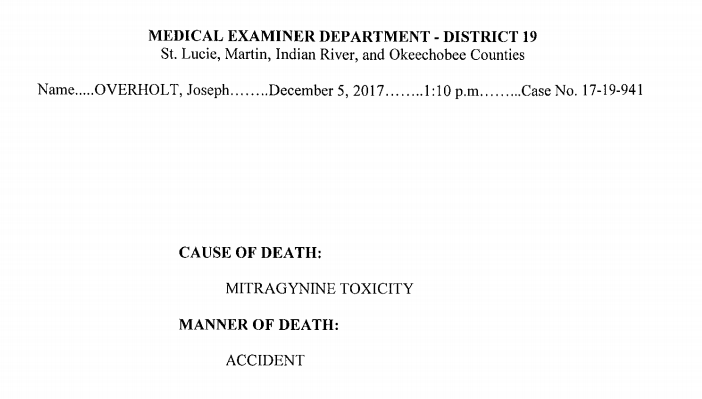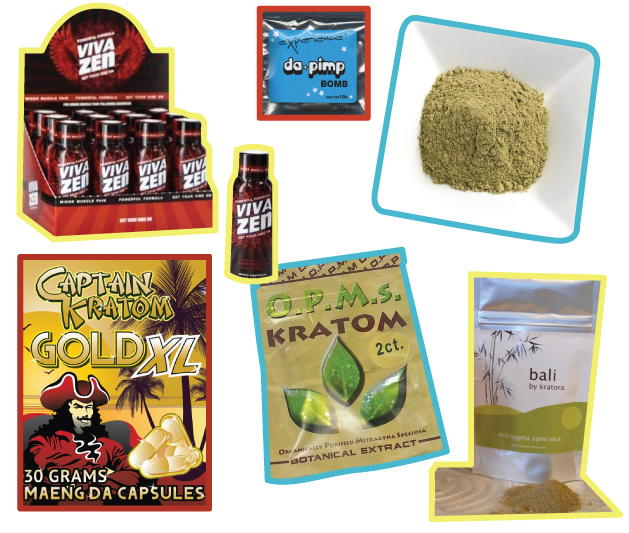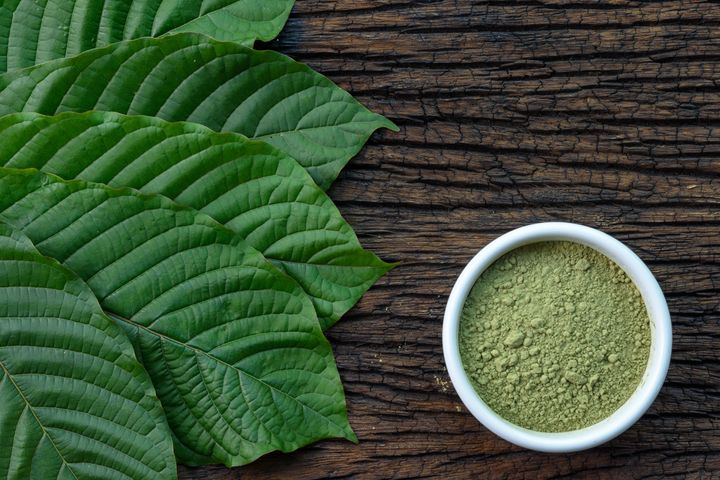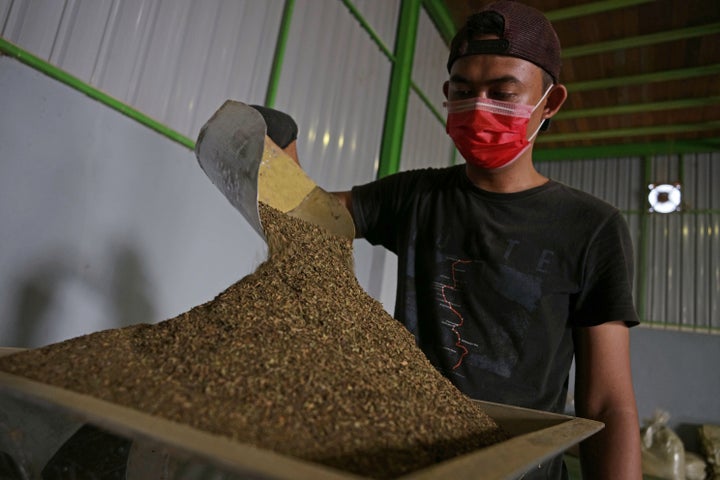In December, in a house in Port St. Lucie, Florida, Joseph Overholt died alone in the room he’d been renting. He was 28. It would be days before another tenant discovered his body laid out on a bed in the early stages of decomposition.
There was no obvious cause of death. Overholt was obese, and a medical examiner determined he had excess fluid in his lungs, a condition frequently seen in cases of drug overdose or heart failure. Nothing else appeared remarkable.
Toxicology results would offer an easier answer. The report showed the presence of alcohol, caffeine and the prescription antidepressant citalopram ― all fairly common. The final substance listed was mitragynine, a psychoactive alkaloid in the popular herbal supplement kratom that is naturally responsible for some of the plant’s opioid-like effects. A screen for fentanyl, a synthetic opioid many times more powerful than heroin, would come back inconclusive “due to interfering substance(s) present in specimen.”
Five unknown “brown pills” were in Overholt’s bathroom, according to a police officer at the scene. That description would be consistent with a kratom product, but the medical examiner did not respond to questions about whether his office had the pills tested, or whether he could say for certain that Overholt had taken any of the pills before his death.
In January, more than 45 days after Overholt’s death, an assistant medical examiner concluded that he’d overdosed on kratom. The cause of death: “mitragynine toxicity.”

Dr. Roger Mittleman, the chief medical examiner for Port St. Lucie and the surrounding area, would later say that Overholt was part of a concerning trend. In a story published last month in the Treasure Coast Newspapers, he said his office has seen at least 17 kratom-involved deaths since 2017. Mittleman said it was proof that kratom is “another thing we don’t need.”
Reports of various kratom-related deaths have fueled a hotly contested narrative about the deadly risks associated with the botanical drug. A medical examiner in Michigan also issued a warning in recent weeks, citing a rising number of deaths in the area supposedly linked to kratom. And just Tuesday, a news report out of Colorado claimed that kratom had killed another man.
Kratom is made from the dried leaves of the Mitragyna speciosa tree, a member of the coffee family native to Southeast Asia, where the plant has been used for centuries. Currently sold in the U.S. as an unregulated herbal supplement ― except in the six states and handful of cities that have banned it ― kratom is typically taken as a powder that can be packed into capsules or brewed into a tea. Other products, including extracts and adulterated products, have popped up, sometimes sold in smoke shops where they’ve been marketed as a legal high or pick-me-up.
Mitragynine has opioid-like effects, and consumers often tout kratom as a mood enhancer or for its stimulant or sedative qualities, which vary depending on dose. In recent years, kratom has also grown in popularity as a step-down treatment off of other opioids, as well as a natural alternative to certain prescription medications. Raw leaf kratom is common and has much higher concentrations of mitragynine than of the related alkaloid 7-hydroxymitragynine, but extracts and other adulterated products have shown increased levels of 7-hydroxymitragynine ― likely making those substances more potent and more addictive.
Amid the recent coverage of deaths supposedly related to kratom, the U.S. Drug Enforcement Administration is expected to decide in the coming weeks whether to proceed with a federal ban. With that decision likely to be based in part on the federal government’s repeated claims that kratom has indeed been responsible for dozens of deaths, reports of additional fatalities might only bolster the case for prohibition. But the government’s data has previously failed to make a compelling argument that kratom actually kills people, and the new cases don’t offer much support.
‘A Knee-Jerk Reaction’
HuffPost obtained more than a dozen autopsy reports from Florida and Michigan, and discovered questionable findings that suggest claims about kratom’s killer potential are still being overstated, or at least vastly oversimplified.
All of the individuals in those reports tested positive for other substances in addition to mitragynine. Many of the people had taken numerous substances, sometimes including potent opioids with well-established risks. Others, like Overholt, appear only to have taken smaller amounts of prescription drugs alongside kratom. Two cases, one in Florida and one in Michigan, were still under investigation and couldn’t be released to HuffPost.
The presence of other substances in these kratom-related death cases has been a major point of contention for the plant’s supporters, who tout it as a largely benign substance and a potential treatment for a variety of conditions ranging from chronic pain to anxiety, depression and opioid dependence.
Advocates often claim it’s impossible to overdose on raw kratom alone, and say that taking too much will lead only to vomiting. Even if there have been some legitimate cases of people overdosing on mitragynine, advocates say the benefits outweigh the relatively low risk of harm, as there are millions of estimated kratom consumers in the U.S.
But scientists have also begun to raise the possibility that mitragynine could have more harmful interactions when paired with other substances ― such as the over-the-counter antidiarrheal loperamide ― that may be metabolized similarly, overwhelming the liver and leading to toxicity, said Jane Babin, an attorney and molecular biologist who’s been investigating kratom death reports.
By blaming these deaths explicitly on kratom, however, health officials may actually be making it harder to study those potential side effects, said Babin, who published a report Tuesday for a kratom advocacy group challenging the government’s kratom death data.

Various medical examiners have made their supposed kratom deaths out to be clear-cut, but the details of those cases leave unanswered questions that point to a need for further transparency on the issue.
A review of nine of the kratom deaths in Mittleman’s Florida district highlights these gaps. All of the cases provided to HuffPost came back positive for multiple substances. A handful of the deaths were also determined to have been unrelated to kratom ― a drowning, a death due to illness and another due to a heart condition. Because mitragynine was in these individuals’ systems at the time of death, medical examiners included them in a broader group of kratom-“associated” deaths, as they might if it were another substance.
Overholt’s case raises a number of questions on its own. His toxicology test showed a reading of 13 nanograms per milliliter of mitragynine in his blood when he died ― a very small amount, below the 20-600 ng/mL range that has been established based on previous kratom death cases.
Some scientists say that scale is not even accurate, because it is only weakly correlated to kratom’s actual lethal potential. Just because those previous fatalities involved mitragynine doesn’t mean mitragynine actually caused those deaths.
Furthermore, previous studies have shown that humans can reach mitragynine concentrations above 20 ng/mL after drinking very small quantities of kratom tea. That alone is highly unlikely to kill someone, Babin said.
“If the lower limit were reliably fatal, everyone who ever tried kratom would be dead,” she told HuffPost.
Even the upper limit of that range gave Babin some pause, since other supposed kratom overdose victims have reached concentrations much higher than that. A police officer who died of a reported kratom overdose last year was found to have 3,500 ng/mL of mitragynine in his blood, for example. Yet here, a medical examiner determined that Overholt had died of a similar cause, despite having just a tiny fraction of mitragynine in his system.
That determination was “more of a knee-jerk reaction than a scientifically based conclusion,” Babin said. She called attention to citalopram, which was present but not quantified on Overholt’s toxicology report. Medical examiners may ignore citalopram because it’s typically prescribed and may appear within therapeutic ranges, but Babin noted that the drug carries significant cardiac side effects that can be hard to detect upon autopsy. Babin said she’d seen a number of previous reports of kratom deaths where both citalopram and mitragynine were present. She raised the possibility that the two substances might have harmful interactions that would be worth further study.
Mittleman didn’t respond to a request for further clarification about the details of Overholt’s toxicology screen, or the final determination that he died of mitragynine toxicity.
‘People Don’t Just Drop Dead’
There are plenty of ways for humans to die, and when it happens, it’s not always easy to figure out how.
Medical examiners must go through a “process of exclusion, just like when you go to a doctor with some sort of ailment,” said Dr. Bruce Goldberger, chief of forensic medicine at the University of Florida. “You start with what you think and then you start pecking away at it until that’s all you have.”
In cases with no other clear culprit, drugs often offer the best explanation, Goldberger said.
“If you have an obviously healthy individual and they drop dead all [of a] sudden for no good reason and they have this drug in their blood, then it’s gonna be the cause of death, because people don’t just drop dead,” he said. “Not usually, luckily.”
Goldberger agreed that the concentration of mitragynine found in Overholt’s body was very low, but said he’d heard of other cases where people knowingly ingested kratom and died shortly after. He said he was not permitted to share those reports with HuffPost.
Asked how mitragynine was causing these deaths, Goldberger conceded that nobody is really sure, a fact that has led to confusion in similar kratom overdose deaths.
“We don’t know enough about the pharmacology, the therapeutics, the efficacy of mitragynine,” Goldberger said. “It’s a drug that has not been studied in humans, so we don’t know exactly what the pharmacological effects are, [or what] the toxicological effects are. We don’t know what a lethal or toxic dose would be.”
This makes it hard to say with complete certainty that kratom is killing people. But Stephen Cohle, the chief medical examiner of Kent County, Michigan, appears convinced. Cohle recently said he’s seen five deaths related to kratom since December, including two individuals who were found to have 830 ng/mL and 290 ng/mL of mitragynine, as well as other prescription substances, in their bloodstreams.

In an email to HuffPost, Cohle pointed to the lack of research on mitragynine’s toxicity as evidence of its dangers.
“It may be less toxic than other opioids, but we don’t know until it’s been studied in a controlled, monitored environment, with known doses of pure mitragynine,” he said.
Cohle has claimed that higher doses of mitragynine can depress breathing, and therefore cause fatal reactions like those seen in other opioid overdoses.
But the science isn’t very well established in this regard either. Studies on animals have found that mitragynine can trigger respiratory depression when administered intravenously in extreme doses, but the effect is generally far less substantial than it is with classical opioids.
Babin, the molecular biologist, expressed concern that confusion is leading health officials to blame kratom for any death where mitragynine is present and the individual showed symptoms of respiratory depression, such as fluid in the lungs. She said the trend could be feeding an inaccurate, self-perpetuating narrative about kratom’s supposed deadly harm, while also leading medical examiners to miss other potential causes of death.
“The more reports like this that they all see, the more entrenched the wrong idea becomes,” she said.
Babin admitted that more research is needed to better understand the effects of kratom on humans, and said a federal ban would only further discourage it. She also argued that doctors might be too quick to dismiss the contributions of prescription drugs and their possible interactions with other substances, including kratom.
To Goldberger, the University of Florida pathologist, the takeaway is less ambiguous.
“I know there’s a lot of fuzziness about this drug, whether it’s safe or not and whether there’s potential therapeutic use of it or not,” he said. “But if you consume too much of it, you will die.”

To Ban Or Not To Ban?
In November, the U.S. Food and Drug Administration threw its support behind a previously stalled DEA plan to ban kratom by placing mitragynine and 7-hydroxymitragynine into Schedule I. Other Schedule I drugs include heroin and synthetic opioids, which together are responsible for tens of thousands of overdose deaths every year.
In subsequent warnings, the FDA has claimed kratom has been associated with serious side effects including respiratory depression, seizures, liver damage and withdrawal symptoms. The agency has also noted that there are no officially approved medical uses for kratom, which it has called “an opioid” with significant “potential for abuse, addiction, and serious health consequences; including death.” Mitragynine does activate opioid receptors, but researchers have argued that it would be more accurate to label it an “atypical opioid,” because the alkaloid’s biological activity differs substantially from that of other common opioids.
The FDA’s cautious approach to kratom may make some sense considering the agency’s public health mandate. While there may not be much evidence to prove that kratom is as harmful as opponents have made it out to be, the botanical herb also hasn’t been through the sort of rigorous testing that is required of FDA-approved drugs. In the FDA’s more conservative outlook, an outright ban may be the policy most likely to “do no harm.”
Still, advocates say the FDA and other health officials have failed to take into account the potential negative effects of prohibition, especially on people who take kratom to improve their quality of life.
There are certainly some recreational kratom users, but many members of the vocal online kratom community say they suffer from severe medical conditions that they’ve been unable to treat effectively with prescription drugs alone. Others have struggled with addiction or other negative side effects stemming from prescription drugs for chronic pain or other ailments. With kratom, they say, they’ve found something that works for them. If it’s banned, many consumers say they’ll be forced back onto ineffective or problematic medications, or back to potentially deadly opioids.
By focusing on reports of deaths that conflict with what we do know about mitragynine, health officials are unfairly fueling a drug scare over kratom, said Mac Haddow, legislative director of the American Kratom Association, a nonprofit lobbying organization.
Haddow acknowledged it’s possible for deaths to occur when people take adulterated kratom products. The FDA has previously included in its list of kratom deaths a set of nine fatalities that took place in Sweden in 2010. Those deaths were related to a kratom-based product that contained a dangerous synthetic opioid additive.
But that’s not what appears to have happened in the most recent cases, according to Haddow.
“We absolutely contest the generalizations being offered by local officials where they cannot tell what dose of kratom will kill you, they are just sure it will,” he said.
In Babin’s report Tuesday, commissioned by the AKA, she accused the FDA of pushing “junk science” and “misinformation” that has led to a “completely unjustified bias against kratom among law enforcement officers, coroners, medical examiners, and state prosecuting attorneys’ groups.”
Babin added that “there is no credible scientific evidence showing that kratom produces the deadly effects of classic opioids.”
Rather than ban kratom, the AKA and other kratom groups are calling for the FDA to exercise its authority to target adulterated products that contain concentrated additives meant to enhance the effect of the alkaloids within kratom. Haddow suggested the FDA could follow the course of action it took earlier this year when it announced a crackdown on highly concentrated caffeine products sold as dietary supplements.
Some kratom sellers have spiked their products with substances like morphine or fen-phen, a controversial drug combination sometimes used to treat obesity, Haddow said. He believes this is a legitimate concern, unlike raw kratom itself.
“The FDA’s not doing anything right now,” Haddow said. “All they’re saying is ‘ban it,’ and we want them to get in and start going after the adulterated products.”
Need help with substance abuse or mental health issues? In the U.S., call 800-662-HELP (4357) for the SAMHSA National Helpline.
